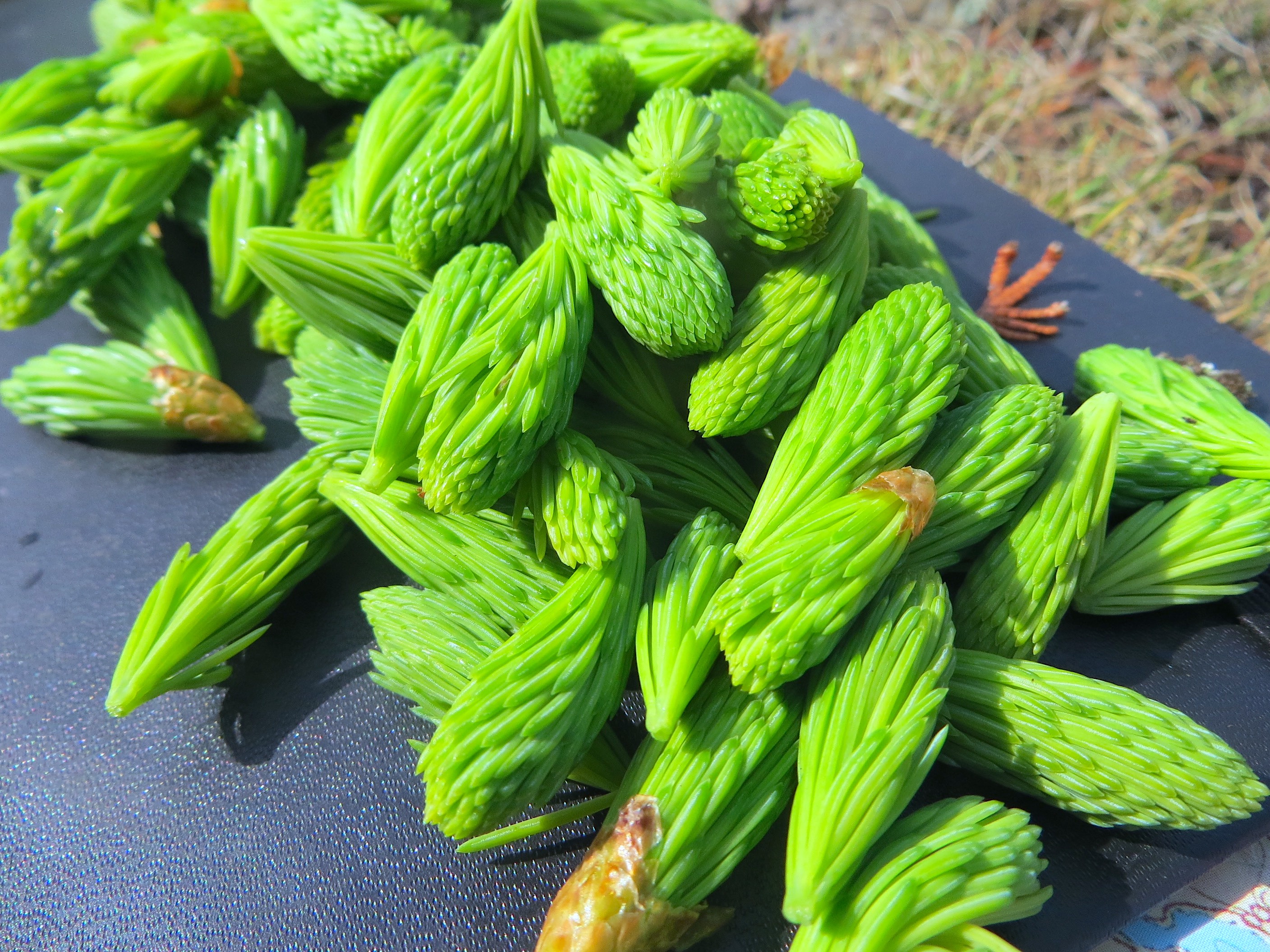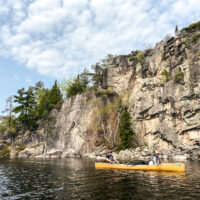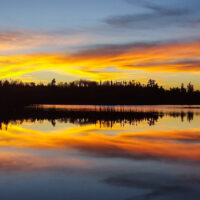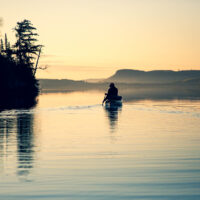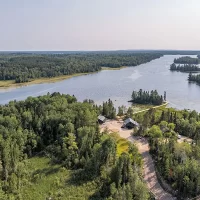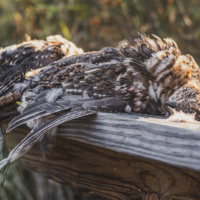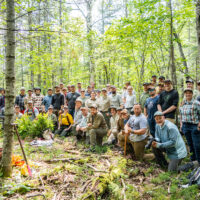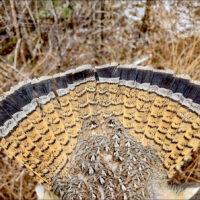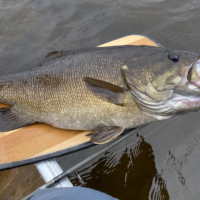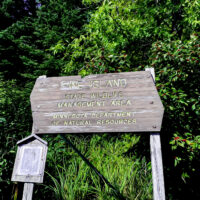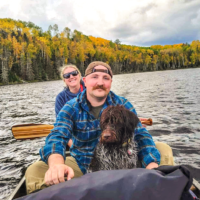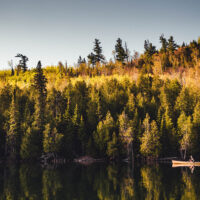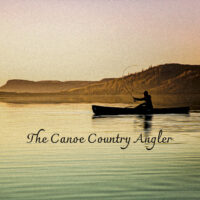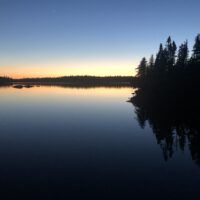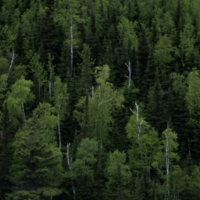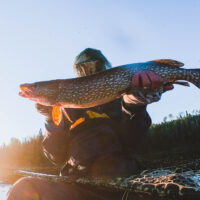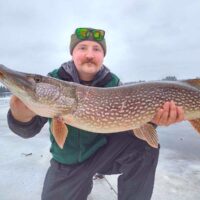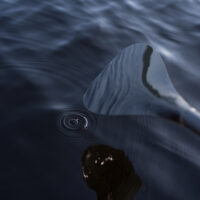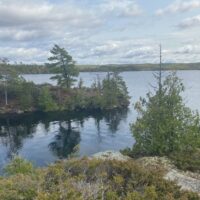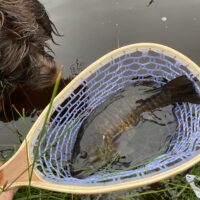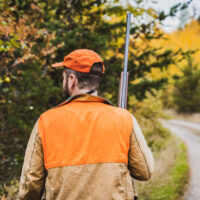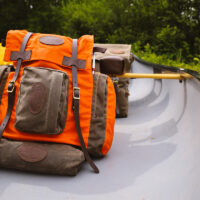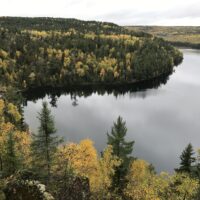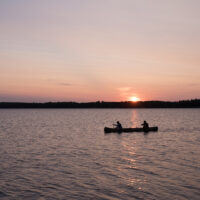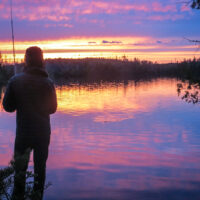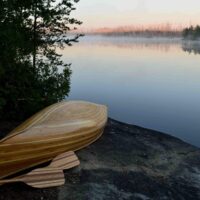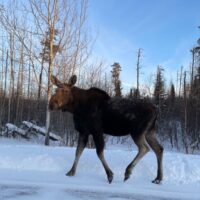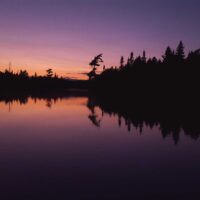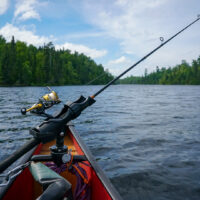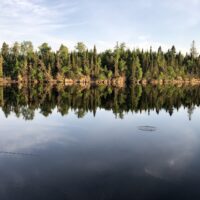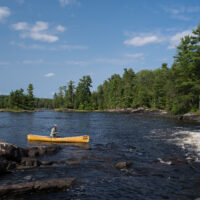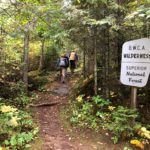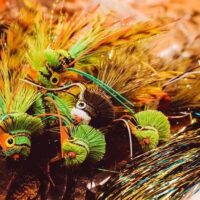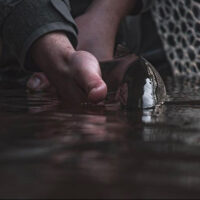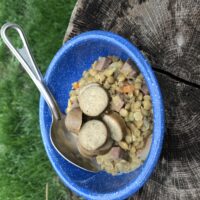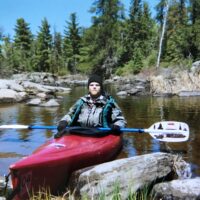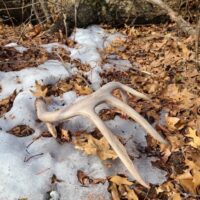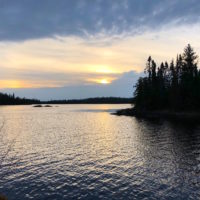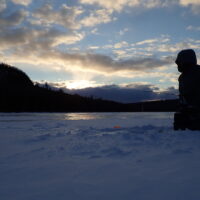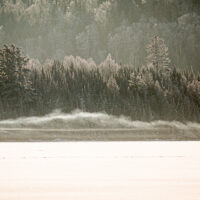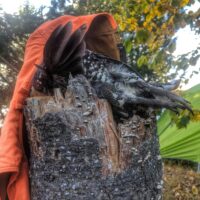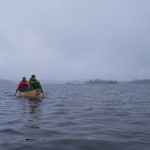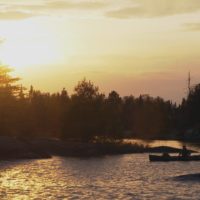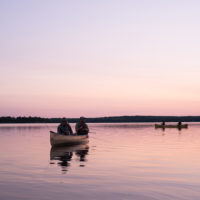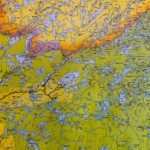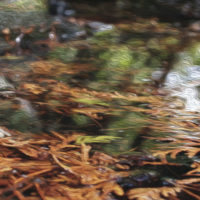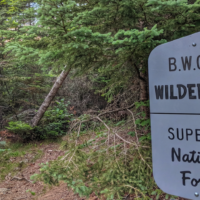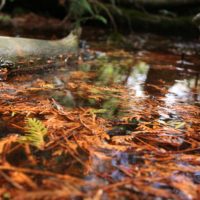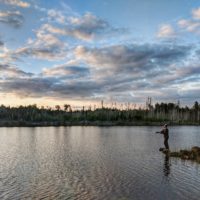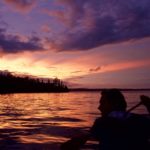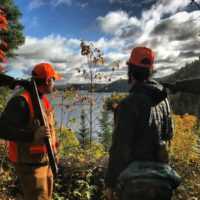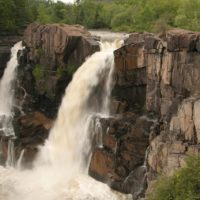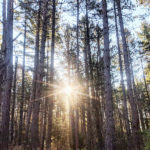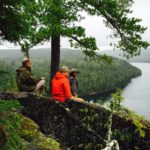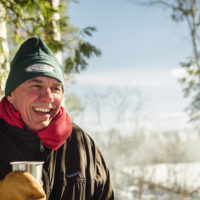The Wildest of Foods: Foraging in the Boundary Waters
June 23, 2020 12:25 pmBy Bradley Dawson
“The next time you head north, keep your eyes out for some of these oft-overlooked wild food sources to go along with that walleye lunch.”
When I was in college, a biologist mentor told me that the best way to feed oneself in the North Woods was to “Climb the tallest tree and look for the golden arches.” Presumably, one’s best hope would lay in their proximity to the nearest McDonald’s. And he had a point – the oft-cold and dark spruce forests of the far northern United States aren’t nearly as productive as those of the more verdant southern regions.
Be this as it may, it’s a mistake to assume that the only source of food in the Boundary Waters Canoe Area (BWCA) is the ubiquitous and ever-popular walleye. Every spring, Minnesotans, and others from around North America head into this wilderness area via canoe, and it’s unusual to see a group that doesn’t also bring at least a few fishing rods. It’s far less common for these same recreators to put time or thought into the other wild food possibilities that exist here. I’ve only been to the Boundary Waters twice, but many of the foraging opportunities I’ll describe are ones I’ve found in nearby areas of northern Minnesota and Wisconsin. The next time you head north, keep your eyes out for some of these oft-overlooked wild food sources to go along with that walleye lunch.

Photo of a fiddlehead fern courtesy of Sportsmen for the Boundary Waters.
The Minnesota fishing opener begins shortly after the snow and ice melt from the northern woods, and this can also be a prime time for plants that start to emerge. In the BWCA, one of the earliest and most popular edible possibilities is the fiddlehead fern. Named after its resemblance to the delicate neck of a violin, this curled tip of the growing fern is fairly widespread in the BWCA, and can often be found in wet areas or near sources of water.
Although several varieties of ferns produce fiddleheads, the most common and well-known is the Ostrich fern. This species surrounds the fiddlehead with a brown husk and features a smooth, indented stem. Stick to those species, such as Ostrich ferns, that are readily identifiable, as some can cause illness. Always cook the fiddleheads after a thorough cleaning. Remove the brown husk and cook them like you would asparagus – delicately steamed or sautéed. Like many wild plants, fiddleheads can be vulnerable to over-harvest, so leave a portion of each plant unharvested to ensure future propagation.
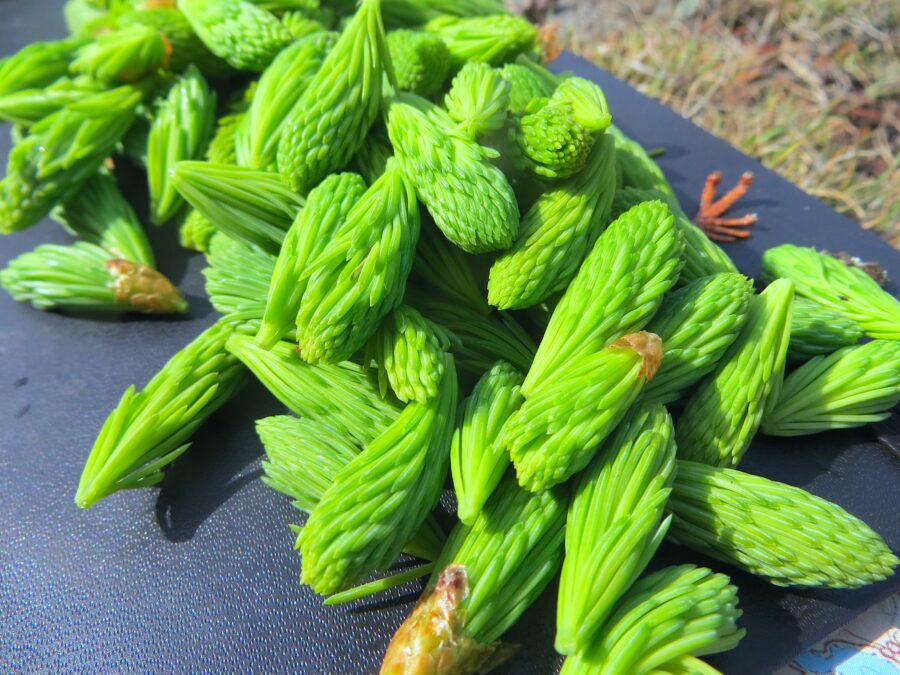
Photo of spruce tips courtesy of Sportsmen for the Boundary Waters.
Think about also adding some spruce tips to your fiddlehead stir fry. When the buds have freshly emerged, and the tips bunch, they will be tender and have a crisp flavor that is good either raw or sautéed. Spruce tips go well in an after-dinner gin and tonic. So when passing through Duluth on your way north to the BWCA, stop at Vikre distillery for locally-crafted small batch gin (Don’t forget that glass bottles are banned in the Boundary Waters, so you’ll need an alternative container).
The passage of the seasons into summer may mean some tougher fishing, but this season can bring more than just mosquitos. Summer in the BWCA is prime berry season. Most visitors don’t need much encouragement to collect the raspberries and blueberries that prefer the sunny post-burn areas throughout the Boundary Waters. Still, others are often overlooked. Thimbleberries and dewberries are also edible, as well as the bearberries and bunchberries that emerge in later summer and early fall.
After filleting your morning catch, those fish carcasses can be put to good use. Load them into a wire crayfish trap and leave overnight to explore another source of wild protein. There is a native species of crayfish in the BWCA – the Northern Crayfish – as well as the spreading and non-native Rusty Crayfish. This invasive species can be identified by a reddish spot on their side and oversized claws, and should not be transported or released alive if captured. The edible meat in crayfish is primarily in their tail, and it can take a lot for a meal, so don’t rely solely on crayfish for a full dinner. They do, however, make a novel and tasty side dish in a gumbo. After the water temperatures begin to drop in the fall, crayfish become less active and migrate to deeper water, so summer is the best time to trap them.
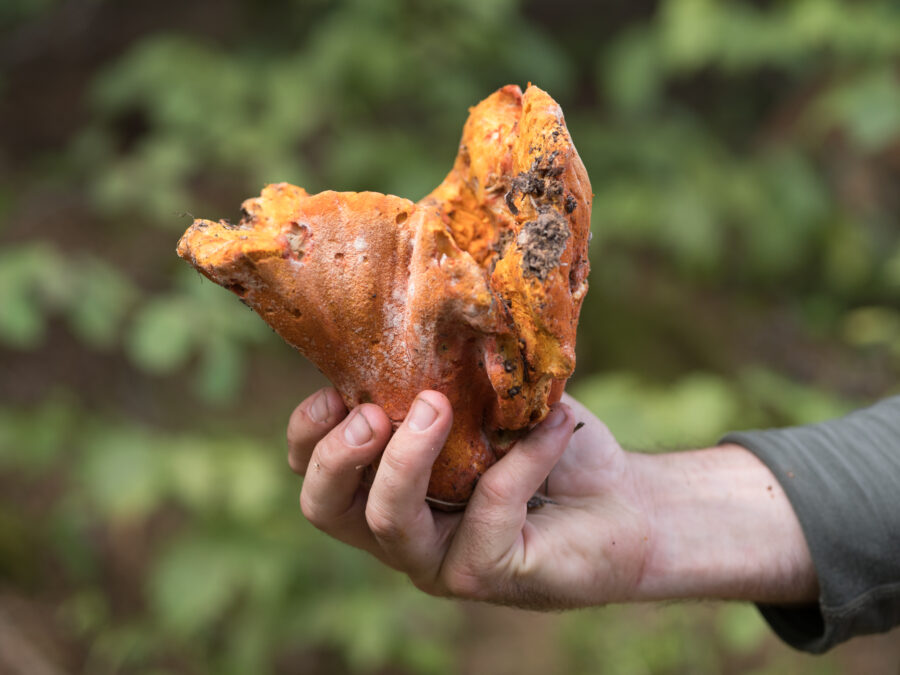
Photo of a wild lobster mushroom courtesy of Sportsmen for the Boundary Waters.
“Mushrooms generally prefer disturbed areas such as recent burns and islands, and hunting them can be a fun alternative activity on days too windy to paddle a canoe.”
Finally, no discussion of wild foraging would be complete without mentioning wild mushrooms. Morels, although present, are not particularly common in the BWCA – however, other possibilities include oysters, chicken of the woods, chanterelles, lobster and boletus. Mushrooms generally prefer disturbed areas such as recent burns and islands, and hunting them can be a fun alternative activity on days too windy to paddle a canoe. Be sure of your identification before eating any wild mushrooms.
The late-season in the BWCA can be harsh, often marked by sudden snowstorms or cold rains. Despite this, it can also be a beautiful time of year when the aspens turn golden and begin to drop their leaves. Although some mushroom and berry species may linger into this period, it’s a time better known for the return of some of the best fishing that the continental United States has to offer.
If planning a trip at this time, consider also taking a collapsible .410 shotgun. The BWCA can be rich in small game, usually boasting healthy populations of ruffed grouse if in an area of young aspens or poplars. Although petite, red squirrels can still provide roughly the same amount of meat as the oft-hunted mourning dove; there may also be opportunities to hunt snowshoe hare as they begin to turn white in preparation for winter. With all of these small game species, don’t rush the cooking; you’ll find that the meat is more tender with a low-and-slow approach of cooking on a bed of coals rather than direct flame. It takes more patience, but you’ll be enjoying some of the best scenery around while you wait for dinner
There’s more than just exceptional fish to be found and eaten while visiting the Boundary Waters, so be sure to look around the woods on your next trip north. These resources are treasured not necessarily for their exceptional culinary qualities but for their inherent wildness, found not in your local supermarket but rather along a trail marked by hard work and the ability to embrace discomfort. These pristine areas continue to face mounting pressures that may vary in their intensity but seem to recur as cyclically as the population swings of the snowshoe hares and ruffed grouse that inhabit these forests. These food opportunities, and the wildness that they embody, will only remain as long as we continue to conserve the ecosystems upon which they depend.
About the author: Bradley Dawson was raised in Minnesota and attended graduate school at the University of Minnesota Duluth near the BWCA, where he studied fish biology. He currently cooks, writes, hunts, and fishes in the Rocky Mountain region of northern Colorado.


